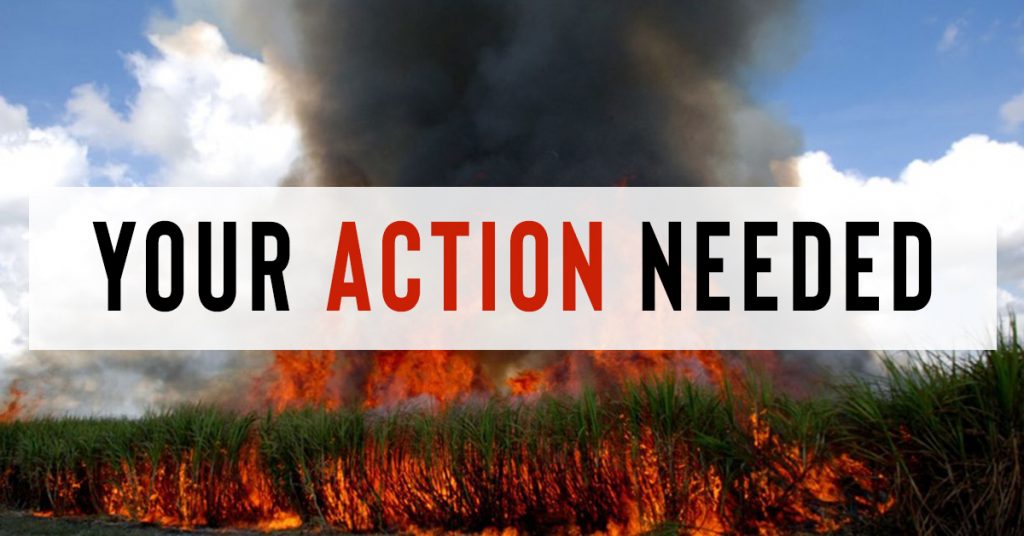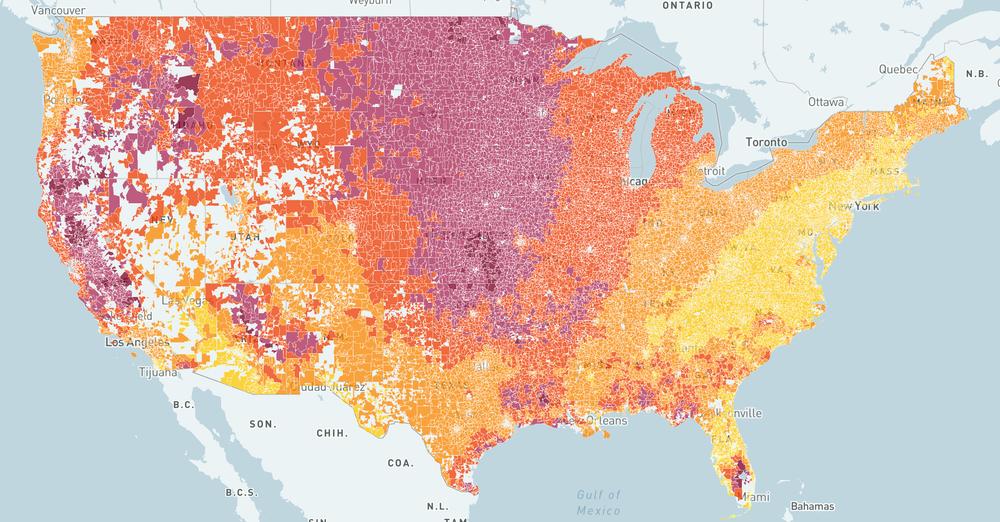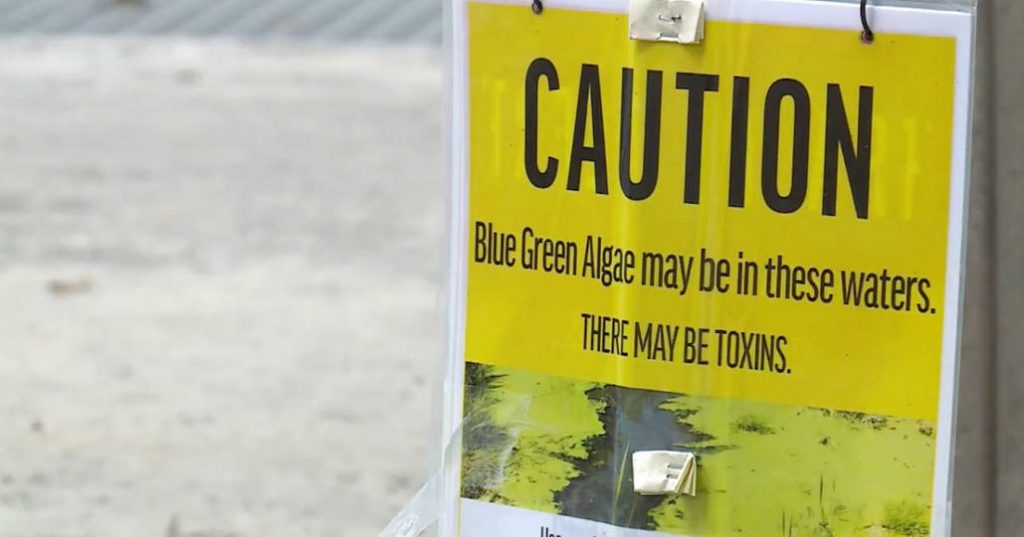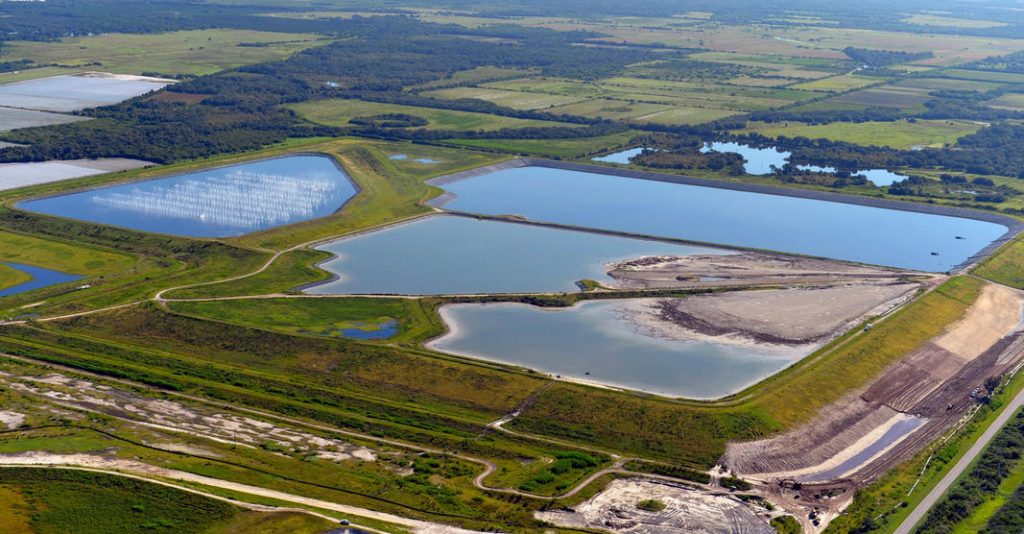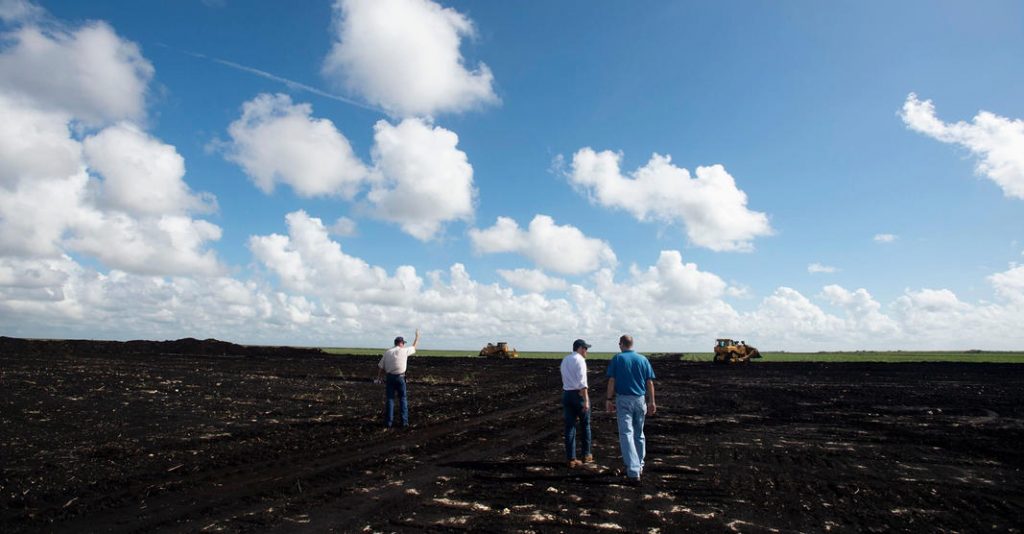➤ The sugar industry puts Florida on the map! For most dangerous smoke in the U.S. that is. Compared to California and other areas ravaged by wildfires this year, sugarcane fields in South Florida still came in “first” for producing harmful smoke. And this is done purposefully, legally, by the sugar industry, year after year. Click the call to action link below to tell the Commissioner of Agriculture to bring this to an end.
➤ Most of South Florida’s drinking water comes from underground aquifers, which hold some of the only pristine, unpolluted freshwater we have left. Nonetheless, some elected officials are willing to risk contaminating our most precious freshwater source by injecting radioactive wastewater from Piney Point underground. If the last century of Everglades destruction and restoration have taught us anything, it’s that Mother Nature knows best. Deep injection wells are NOT the solution.
EVERGLADES CALL TO ACTION
Big Sugar’s archaic cane burning is a threat to human health and the environment. By law, Florida’s Commissioner of Agriculture can force them to modernize.
IN CASE YOU MISSED IT
Dangerous Air: We Mapped the Rise in Wildfire Smoke Across America. Here’s How We Did It | Inside Climate News
Shockingly, but not surprisingly, Florida’s sugar industry is the number one offender in the US. “A handful of ZIP codes in Florida (where sugarcane is grown) recorded the worst smoke days in the U.S., even higher than California.”
By law, there is only one office holder who could bring an end to this archaic, but cheap practice of preharvest burns in the Glades communities – Florida’s Commissioner of Agriculture. We are continuing to call on her to enact these changes now. Add your voice to ours. It’s quick and easy in the comment section below.
Where do Democrats running in Florida’s bluest congressional district stand on issues? | Miami Herald
All the candidates were asked the same questions, including: “Should the sugar cane industry continue to receive the same support it got from former Rep. Hastings? Omari Hardy’s answer rings loudest and best: “NO.”
Thank you for standing up to the beast and working for the public’s best interests, Rep. Hardy.
Health alerts issued in areas of Highland Beach, Pahokee for blue-green algae | WPTV
Agricultural pollution and a broken water management system, being kept broken to ensure water supply for Big Sugar, will continue to bring South Florida to its knees. Everglades restoration will solve part of the problem. Getting corporate polluters under control is the missing link.
Plan to inject Piney Point wastewater underground has critics | Herald Tribune
Tampa Bay was in good shape — until an “atomic bomb” of 215 million gallons of toxic pollutants from the defunct Piney Point phosphorus plant was released into Tampa Bay and into Manatee County groundwater.
The discharges — approved to avoid a larger catastrophe — ceased in April, but the gypstack, a mountain of toxic waste that resulted from fertilizer production, remains and still holds millions of gallons of process wastewater, stormwater and dredged spoil that contain radioactive materials such as Uranium and other heavy metals.
That met up with an already existing red tide off the coast and exploded into something we’ve not seen before. Keep in mind, this is not the first fertilizer plant disaster in Florida. Also keep in mind, the central part of our state has 24 other gypsum stacks.
EAA reservoir: Army Corps awards first contract for project to curb Lake O releases | TC Palm
THIS IS BIG! Despite three lawsuits recently filed by Big Sugar to go after the public’s water and the EAA Reservoir and Wetland project, to store and clean polluted Lake O water, the Army Corps is not showing any signs of slowing down.
Once completed, this key component of Everglades restoration will greatly reduce and even eliminate the toxic discharges to both coasts of Florida AND hydrate the Everglades with clean freshwater, ensuring stability for the ecosystem and the drinking water supply for 9 million Floridians. It’s what true restoration is all about.

